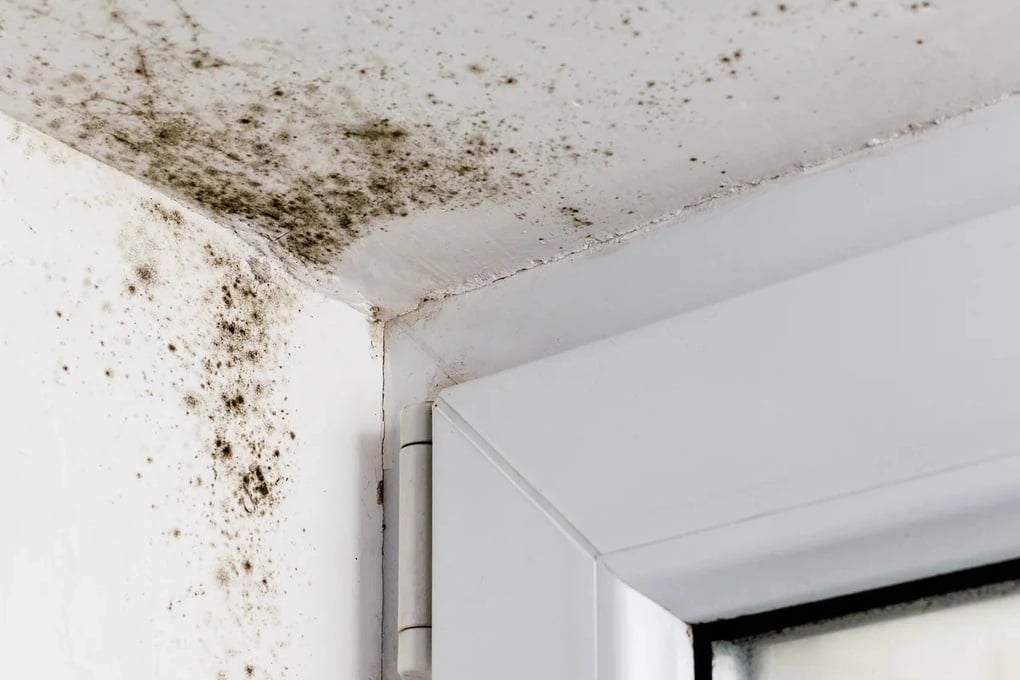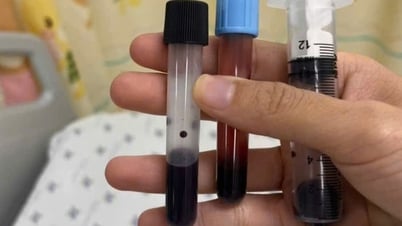Mold is a general term for various fungi, the most familiar of which is black mold (S. chartarum) which commonly grows indoors during the rainy season.
This fungus causes black patches on surfaces exposed to moisture, such as walls, ceilings or areas near windows, and is ranked among the top ten fungi of concern due to its ability to produce toxic chemicals called mycotoxins.
Living in a house with black mold for a long time can cause health problems (Photo: BBC)
What are mycotoxins?
Mycotoxins are chemical compounds found in many types of fungi, with hundreds of different types. Of these, two notable types are roridin (which inhibits protein synthesis) and satratoxin (which causes pulmonary bleeding).
In the 1990s, a report in the United States linked S. chartarum to cases of pulmonary hemorrhage in newborns — a rare, potentially fatal condition caused by blood leaking into the lungs.
However, subsequent studies found many errors in this report, especially in the calculation of fungal spore concentrations. After correction, the link between black mold and hemorrhagic lung disease was virtually lost.
The American Academy of Allergy, Asthma and Immunology states that damp environments are linked to health problems, but there is no reliable evidence that mycotoxins from black mold are a direct cause of harm.
Inhalation of spores is the main route by which mycotoxins enter the body. However, S. chartarum does not actually release many spores into the air. Furthermore, the concentration of spores in the air is usually not high enough to pose a health risk.
Causes allergies
Although the risk from mycotoxins may be negligible, molds can still cause health effects through allergic reactions. Molds, including black mold, can trigger or worsen asthma attacks in sensitive people.
In rare cases, indoor mold can cause sinusitis, bronchopneumonia, or pneumonia due to an allergic reaction to the mold.
People with weakened immune systems, such as those taking immunosuppressant medications, are especially susceptible to fungal infections. These problems can often be controlled by removing the mold or removing the person from the affected environment.
How to effectively remove mold in the house
High humidity is the main cause of mold growth in the home. Areas such as bathrooms and kitchens, untreated wall corners, or areas with frequent water leaks are hot spots for mold growth.
To minimize the risk of mold in your home, you can take measures such as:
Improve ventilation: By opening windows or using exhaust fans when cooking or bathing.
Reduce humidity: Take shorter showers, wipe down surfaces after using the bathroom.
Check for leaks: Make sure pipes and gutters are free of leaks, as water seeping into walls can create conditions for mold to grow.
Source: https://dantri.com.vn/suc-khoe/nguy-co-suc-khoe-tu-nam-moc-trong-nha-mua-mua-20250617145353015.htm


































































































Comment (0)